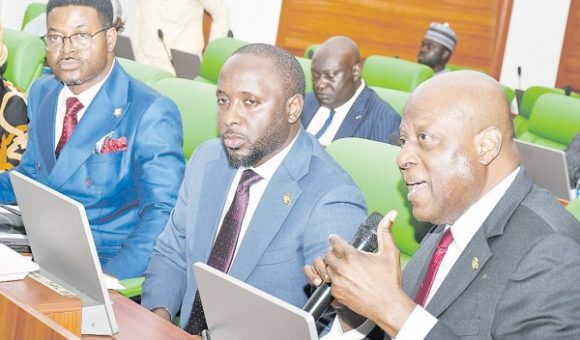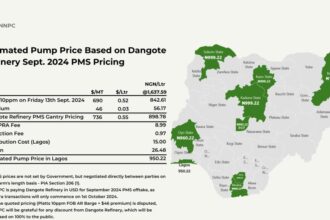Central Bank of Nigeria (CBN) Governor Olayemi Cardoso affirmed yesterday that the economy is on an upward swing despite the current difficulties.
According to him, all indices point to a fast-improving economy which will hit the $1 trillion Gross Domestic Product (GDP) target by 2030.
He spoke about how the service sector is driving the buoyancy and foreign reserves rising steadily to give room for confidence by foreign partners.
He spoke during his appearance before the House of Representatives Committee on Banking Regulations.
Cardoso explained the policy measures and strategies to address domestic macroeconomic challenges.
He said the recapitalisation policy is expected to result in a more robust and resilient banking sector by March 2026.
On the macroeconomic performance in 2024, he said projections indicate a growth rate of 3.2 per cent and 3.3 per cent for 2024 and 2025.
He added that Nigeria is projected to maintain a more robust 4.3 per cent growth rate.
Cardoso said the non-oil sector maintained strong performance, contributing 94.30 per cent to GDP with a steady 2.80 per cent growth rate.
He added that the oil sector’s growth rate has almost doubled to 10.15 per cent in Q2, 2024 from 5.70 per cent in Q1, due mainly to improved security surveillance which resulted in increased production of crude oil and natural gas.
He said the Services sector continues to be the primary economic driver, contributing 58.76 per cent to GDP with a robust growth rate of 3.79 per cent.
Similarly, he said the Industrial sector has shown remarkable improvement, with its growth rate surging to 3.53 per cent from 0.31 per cent.
He pointed out that the contribution of agriculture to total GDP also increased.
The growth rate of the sector rose to 1.41 per cent from a negative territory of -0.90 per cent, indicating a substantial turnaround in productivity.
He also said the foreign exchange reserves have grown significantly, with remittance flows currently representing 9.4 per cent of total external reserves.
He said the reserves rose by 12.74 per cent to US$39.12 billion as of October 11, 2024, from US$34.70 billion in June, driven largely by foreign capital inflows and receipts from crude oil-related taxes.
In Q2 2024, the CBN maintained a current account surplus and saw remarkable improvements in trade balance, he said.
Cardoso said the current external reserve position can finance over 12 months of import of goods and services, or 15 months of goods only.
This is substantially higher than the prescribed international benchmark of 3.0 months, reflecting a robust buffer against external shocks, he said.
He said inflation trended upward, driven largely by high food prices, cost of energy and legacy infrastructural challenges, but it commenced deceleration from 34.19 per cent in June to 33.40 per cent in July.
He said the moderation in inflation became more pronounced in August, as headline inflation further eased to 32.15 per cent.
This, he said, was largely attributed to monetary policy measures taken by the Bank.
With aggressive monetary policy tightening coupled with robust monetary-fiscal policy coordination, inflation is expected to further trend downward in the near-to-medium term, Cardoso said.
To combat inflation, he said the CBN fully reverted to an orthodox monetary policy approach and implemented a comprehensive set of measures.
These include raising the policy rate by 850 basis points to 27.25 per cent, increasing cash reserve ratios and normalising open market operations as the primary liquidity management tool.
Cardoso added: “We have adopted an Inflation-Targeting (IT) monetary policy framework as part of the Bank’s Enterprise Strategy (2024 2028).
“The IT framework, widely adopted across various global economies, is renowned for its effectiveness in combating persistent inflation.
These integrated measures are aimed at stabilising prices, optimising liquidity management, and engendering an effective monetary policy framework.
“Regarding the foreign exchange market, the Bank implemented various reforms including a unification strategy, which streamlined various exchange rate windows into a single model, adopting the ‘Willing Buyer, Willing Seller’ approach to enhance FX liquidity and financial market stability.
“This move was aimed at fostering transparency, reducing market distortions, and enhancing the efficiency of foreign exchange allocations.”










